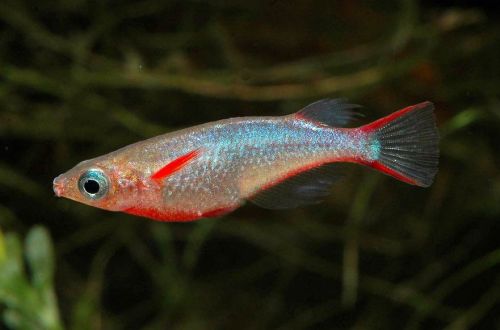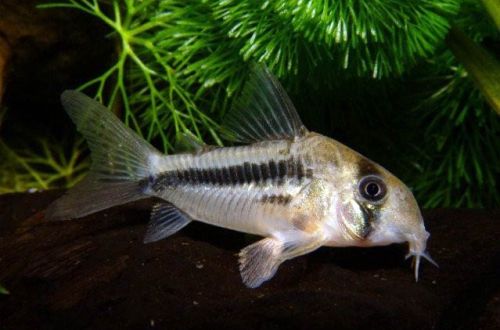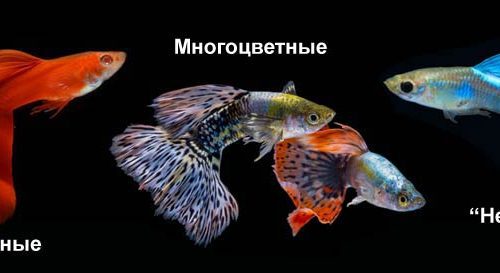
Orysia Vovora
Orizia Vovora, scientific name Oryzias woworae, belongs to the family Adrianichthyidae (Adrianichthyidae). The fish is named after Daisy Wowor, an employee of the Bogor Zoological Museum (Java Island, Indonesia), who first collected and described the new species in 2010.

Contents
Habitat
Comes from Southeast Asia. It is endemic to the Indonesian island of Muna, located south of Sulawesi. Inhabits shallow forest streams and rivers. Prefers regions with a weak current.
Brief information:
- The volume of the aquarium – from 40 liters.
- Temperature – 23-27°C
- Value pH — 6.0–7.5
- Water hardness – soft to medium hard (5-14 dGH)
- Substrate type – any dark
- Lighting – subdued
- Brackish water – no
- Water movement is weak
- The size of the fish is about 3 cm.
- Food – any food
- Temperament – peaceful schooling fish
Description
Adults reach a length of about 3 cm. Males have an iridescent bluish body color with red fins. Females are not as colorful, but also have reddish hues on their fins and tail.
Food
Can be accustomed to dry food in the form of flakes and pellets of suitable size. However, the most balanced diet will come from a combination of dry and live/frozen foods.
Maintenance and care, arrangement of the aquarium
The optimal size of an aquarium for a flock of 6 fish starts from 40 liters. In the design, it is recommended to use dark soil, thickets of plants, various snags and other natural or artificial decor. Clusters of vegetation have the potential to become hiding places for fry, giving them a good chance of survival.
The aquarium must be mature and contain clean warm water within the acceptable range of hydrochemical values. Regular maintenance along with the smooth operation of the filtration system will ensure favorable conditions for keeping.
Behavior and Compatibility
It is necessary to maintain the number of flocks in the amount of at least 6 individuals. Males can sometimes arrange small skirmishes, competing with each other for the attention of females, but it does not come to injury. Compatible with similar peaceful small fish. Good neighbors in the aquarium will be the Green Dwarf Danio, Green Neon Parsing, Danio Gates, Parsing, Blue-Eyed “Red Neon” and many others.
Breeding / breeding
Pretty prolific species of fish. In a favorable environment, females are able to produce 10–20 eggs every few days. The breeding method differs from that of other spawning fish. Ripe eggs at first are attached in the back of the female’s abdomen in the form of a bunch. They hang there until they are fertilized by the male. Then the eggs are dropped among the thickets of small-leaved plants. The incubation period lasts 1-3 weeks. Adult Orizia Vovoras usually do not eat their own offspring, but other species can enjoy other people’s fry with pleasure. Juveniles are preferably transplanted into a separate tank. Feed with special powdered feed, or in the form of suspensions.
Fish diseases
It is considered a hardy and unpretentious species. In a balanced aquarium ecosystem, disease outbreaks are rare. Problems can arise with a significant deterioration in the conditions of detention, with contact with already sick fish, etc. For more information on symptoms and methods of treatment, see the section “Diseases of aquarium fish”.





